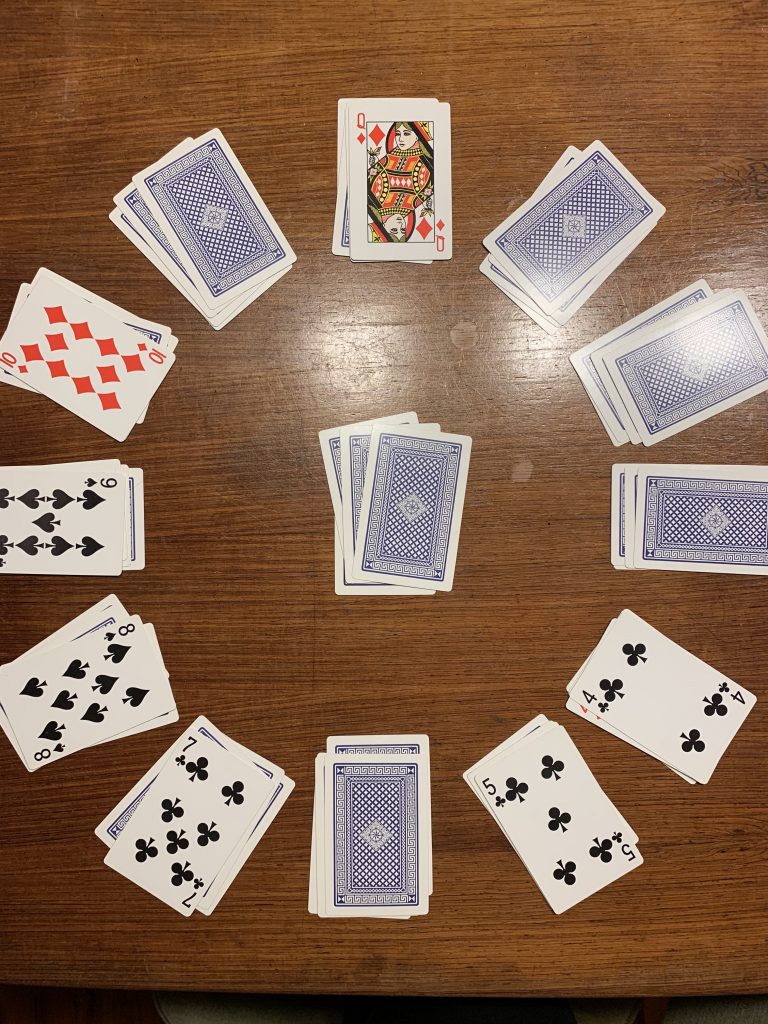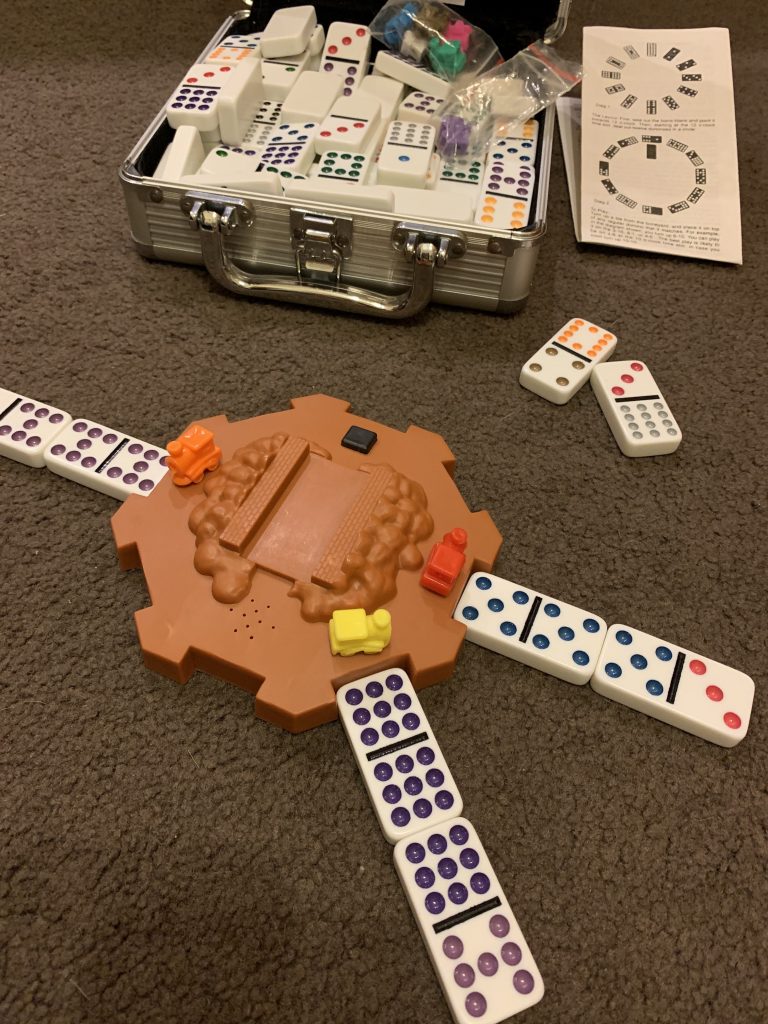This week’s blog is inspired by research that James Russo, Toby Russo, and Leicha Bragg have recently conducted (and will present at the upcoming MERGA online conference) about factors that influence the mathematical games teachers’ choose. They propose a number of factor themes related to why teachers choose specific games – I will utilise these themes to share a couple of my own favourites from childhood that shaped my early mathematical experiences. I thought it would be good to share games I played as a child, not only as they have elements of mathematics involved, but to show how ‘home’ games are just as valuable (mathematically) as ‘school’ games.
What factors do primary school teachers consider when deciding which games to play in their classroom? Research with @tobyrusso @leicha... @AusTeacherRiss @attard_c @helenjwc @JBayWilliams @jenbowden33 @kath_cartwright @Corovie @ayliedavidson @mminas8 https://t.co/14FJ1Jib6L
— James Russo (@surfmaths) May 19, 2021
Teachers were asked in a questionnaire: Which factors do you consider when selecting which games to play in your classroom? Through the survey of 236 Australian primary school teachers, Russo, Russo, and Bragg discovered four frequent themes in game-choice: mathematics is central; accessibility and differentiation; classroom management; and engagement and enjoyment. Along with these main themes, other factors included: communication and reasoning; supporting social and emotional development; developing strategic thinking; balance of skill and luck; game adaptation and inquiry; and supporting assessment of student thinking.
Clock patience
As a child my nan taught me how to play many card games, one of which was clock patience. The idea of the game is that you put out all the cards in a circle, 12 piles in the hour positions and one pile in the middle (for the kings) – all piles have four cards. You turn the last card up in the middle, then proceed to place it ‘where it belongs’ according to its position on the clock. For example, if I turned up a three, I place it under the pile where 3 o’clock is, then I turn over the top card in the three pile and continue … The aim of the game is to have all the cards in the hour positions turned over before you get all four kings out. Below I have used some of Russo, Russo, and Bragg’s themes to share why I think this is a great mathematical game.
- Mathematics is central: Clock patience focuses on numerous mathematical concepts. The hardest thing about playing was developing the ability to put the cards out! Placing cards equidistant, or close to it, is an early introduction to proportional reasoning. Thinking about ‘where three goes’ and how much room to leave between each set of cards took practice. This skill also links to number positioning on an actual clock face, the visual and physical movement of the cards helped build knowledge of clock number positions. Even simply the one-to-one matching of numerals is beneficial in clock patience, and thinking about the sequence and order of numbers. There are also links to chance concepts, as at some point in the game you start to either feel like you are probably going to loose, or might have a chance of winning.
- Accessibility and differentiation: There is definitely a level of challenge in this game as the cards are randomised for each game (it’s more focused on luck than skill but is still engaging due to the winning element). Clock patience is an adaption from patience, or solitaire, and could be adapted further – eg for enabling, students could be given the spaces to place the cards, for extending, it could be ‘beat the clock (timed)’ or ‘beat the teacher’, or stopping the game at certain points to discuss the probability based on the cards already out for upper primary students.
- Classroom management: The game only requires cards and a table or floor space. Cards are generally easily available at supermarkets, shops like Officeworks, or $2 shops. You could also make your own cards. It’s often played individually but students could take turns. The instructions are straight forward and students can play repeatedly while building number sense skills. You can also buy ‘school-friendly’ cards that are 1 -13, to avoid students needing to learn to associate Jacks with 11 etc.
- Engagement and enjoyment: I think it’s fun! I still enjoying playing as an adult and teaching my own children how to play. The game doesn’t take too long to play and as it focuses on early number skills.
Dominoes
I mentioned I grew up playing lots of card games, I also played board games, dice games, backgammon, mahjong, and the classic game of dominoes. We did have the standard double-six dominoes but we also had other versions, like train dominoes (or cardinal dominoes) – that introduced me to the double-twelve. Although we use dominoes at school, they are a wonderful game to play at home. There are also plenty of alternate ways to use and play with dominoes: 10 ways to use dominoes, dominoes (from nrich), and Doug Clarke had some great ideas with dominoes (from MANSW’s 2019 annual conference).
- Mathematical content: The regular game of dominoes can develop many mathematical concepts such as: counting and cardinality, using counting to check, subitising, matching numeral to quantity, visualising doubles, combinations and number bonds, and developing known number facts. Using dominoes up to double-twelve, like in my train dominoes (pictured) assists in developing pattern recognition and number structure for larger numbers.
- Communication and reasoning: As dominoes is a game for pairs or small groups, communication is involved. Students will start to match number word names with quantities and use reasoning to decide where to go. It also develops reasoning about eliminating possible goes, and using knowledge of numbers to determine what can and can’t go where.
- Thinking strategically: Based on the dominoes in your hand, you may try to block others by playing dominoes you know you can go on later, or making all ends the same number to make other’s goes more difficult.
- Game adaptation and inquiry: The ways to differentiate and adapt dominoes is endless! For adaptation: allowing players to build off all sides of the double, playing with your tiles face down, or playing all your tiles that can go during your turn. For inquiry: making number sentences, making number balances, creating ‘magic’ squares of dominoes where the sides all add to the same number, matching dominoes to one- and two-digit numbers, or making trains that add to ten.
The themes that arose in Russo, Russo, and Bragg’s research may make a nice check-list when thinking about using games within your mathematics lessons or at home. In the past these authors have put forward Five principles of educationally-rich mathematical games, these can be read about in James and Toby Russo’s APMC article Transforming mathematical games into investigations. I have previously mentioned this article in my blog What’s your favourite maths game? That I followed-up with Favourite maths games: Big ideas in small packages. Whether it’s for extension or consolidation, collaboration or challenge – games are important for developing understanding in mathematics and engaging in thinking mathematically. And more importantly, for having fun!









